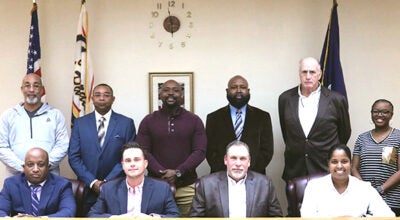The ‘olds’ that enlighten the ‘news’
Published 12:24 am Sunday, June 4, 2017
____________________________________
Is the line drawn above a long line?
The correct answer, of course, is neither “yes” nor “no,” but rather, “compared to what?”
Though we can say definitively that the line is so many inches long, we can’t tell whether the line is “long” in a relative sense unless we have knowledge of other lines. We have to have broader perspective. And what is true of line lengths is equally true of human heights, or human virtue and vice, or national strength, wealth and general well-being. Knowledge of others, in fact, is essential to self-knowledge. And for the same reasons, knowledge of other times — meaning the past — is essential to knowing our present.
Without historical perspective, we’re incapable of telling today’s mountains from contemporary molehills. We’re incapable of judging, for example, the degree of danger posed by ISIS or by climate change, or judging the scale of our debt to China, or the point of Black Lives Matter. We’re left unsure, or worse, aggressively sure about these issues despite lacking any perspective on these issues, and therefore, obsessing over molehills while ignoring entire ranges of mountains.
This idea — that “the olds” are extremely helpful in making sense of “the news” — will be the premise of a new column to be published every other Sunday here in The Natchez Democrat. This the first in the series.
But in talking about the relevance of history, I also want to stress something about the sources in which that relevant history can reliably be found. Here, you will not find information dredged from random internet sites, email chains, pop-historians, or TV “analysts” whose only credentials are that some network calls them “analysts.” And I will not rely on the History Channel, that scarlet whore of Babylon among historical sources, producer of the lunacies of “Ancient Aliens,” popularizer of the fraud of Nostradamus, the network which, by indiscriminately airing a goulash of facts and lies, informed speculations and ill-informed fantasies, has helped to discredit the very idea of objective truth…. May its mercenary corporate bosses rot in history hell (which is located precisely, I believe, inside a speck of dust resting on Footnote 113, from Chapter 53, of Volume 5, of Edward Gibbon’s The History of the Decline and Fall of the Roman Empire.)
So where to turn? To those who think that facts are real. That facts matter. And those would be scholarly sources and time-tested journalistic sources. I acknowledge that scholars aren’t perfectly objective, much less infallible. No one is. But their work is routinely subjected to a rigorous process of peer review by other scholars in the field. It is checked, double checked and triple checked. So, yes, scholarly sources really are vastly superior to others. I’ll definitely have my own take on things, but I intend to mine that rich vein of information.
A few cautions, though. History cannot provide pre-packaged fixes for present-day problems. Today is not yesterday. Besides, while “learning the lessons of history” is highly recommended, even the best scholars cannot always agree as to what those lessons are. There’s a reason you seldom see historians making bold predictions about what is about to happen; being immersed in the tumultuous tragi-comedy of the human past, they know not to pretend to be Nostradamians.
So, this column will not be a panacea for all the ailments of the world. My hope, though, is to shed some historical light on those ailments. Then, maybe, with better vision here in the present, we can doctor ourselves to better societal health.
Jim Wiggins is a retired Copiah-Lincon Community College history instructor.





